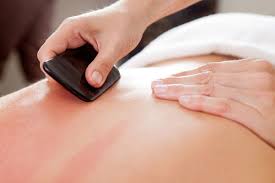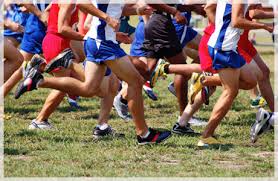***Please note, this blog entry is part of an assignment for my DAT program at AT Still University. The research quoted throughout the text is fictitious and has NOT been actually performed. Any claims of effectiveness of the IASTM Gua Sha treatments are not based on actual data***
Pain, muscle soreness, tendinitis, and overuse injuries are synonymous with sports but a team of secondary school athletic trainers (ATs) from [the local] Sports Medicine and Performance Center (SMPC) are studying a solution to the problem.  Gua sha is a form of Instrument Assisted Soft Tissue Mobilization (IASTM) which has been used by Chinese for centuries. Gua Sha is a scraping technique that intentionally raises blood flow to the area using small instruments and a massage oil.1
Gua sha is a form of Instrument Assisted Soft Tissue Mobilization (IASTM) which has been used by Chinese for centuries. Gua Sha is a scraping technique that intentionally raises blood flow to the area using small instruments and a massage oil.1
The ATs studied the affects of Gua Sha on lower extremity musculoskeletal injury for the high school athletes in their care for the 2017-2018 school year. The 6 high schools of the [the local] Valley School District (BVSD) were assigned to be Gua Sha treatment (n=3) or a control group treatment (n=3). BVSD had approximately 4,500 athletes over the course of the school year. Of these 4,500 athletes, 365 qualified for the study with 190 athletes receiving Gua Sha treatment from the AT. Athletes at all 6 sites received standard treatment for their injury with the treatment group receiving an additional Gua Sha treatment 3-5 times per week for 30 to 120 seconds. The published results can be found here [link to website}.  Results indicated the additional Gua Sha treatment had a significant and immediate effect on pain by decreasing pain an average of X%. Additionally, the treatment group returned to play on average X days faster than the control group.
Results indicated the additional Gua Sha treatment had a significant and immediate effect on pain by decreasing pain an average of X%. Additionally, the treatment group returned to play on average X days faster than the control group.
These results are especially promising for secondary school ATs, physical therapists, and team physicians who work with high school athletes. Gua Sha is a simple IASTM technique which does not require specialty certification course work, is safe, is fast, and effective. The immediate significant decrease in pain allows the athlete to perform effective rehabilitative exercises and the faster return to play decreases the workload on the busy clinical time of the AT.
If you are an athlete experiencing an overuse injury, contact your local sports medicine clinic and inquire about their athletic training services!
References
- Nielsen A, Knoblauch NT, Dobos GJ, Michalsen A, Kaptchuk TJ. The effect of Gua Sha treatment on the microcirculation of surface tissue: a pilot study in healthy subjects. Explore (NY). 2007;3(5):456-66.
